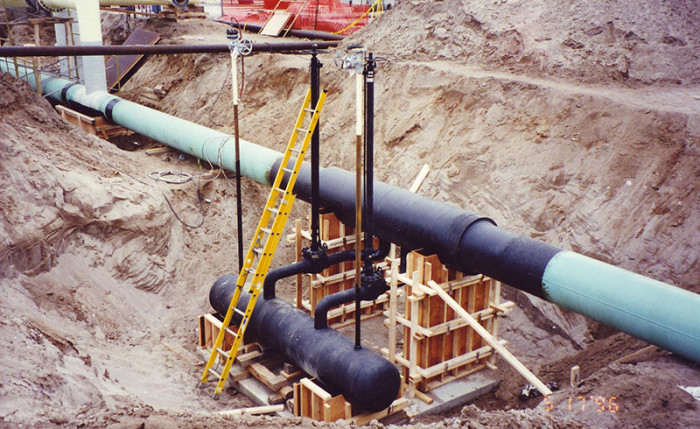
Applications
Applications
-
General liquid removal from gas streams.
- Gas transmission lines, gathering systems, pipelines, distribution systems
-
Managing slug flow within a pipeline gathering system
-
Mitigate upsets in processing plants due to liquid carryover
-
Liquids protection of compressor engine inlets
-
Cavern storage liquid removal and fill (bi-directional)
-
Liquids removal before river crossings and low points in pipelines
-
Lube oil carryover removal
-
Production and well test separators
-
Liquids removal upstream of ultrasonic gas meters (reduced meter fouling)
-
Steam condensate removal from steam lines (retrograde condensation operating conditions, SAGD).
Installations
Installed globally with flexible configurations – over 100 installed

From pipelines to process equipment applicatons, Innopipe gas separators provide the most efficient solution
United States
- Liquid removal from high pressure distribution pipelines.
- Liquid removal from statewide gas distribution system (Indiana)
- Liquid removal from HDPE gathering lines to prevent slugs (Montana/ Wyoming)
Eastern Canada
- Cavern storage: bi-directional separation (in and outflow)
- Liquid removal to improve ultrasonic gas meter accuracy
- Liquid removal to remove retrograde condensation downstream of compressor stations
Western Canada (custom solutions)
- Lube oil removal after compressors.
- Liquid carry-over removal downstream of process towers
- Flare line liquid knock-out.
- Portable well test skids to remove liquids prior to metering
- Replace inlet separators or slug catchers
Middle East
- Large gas pipeline power station gas supply. Used to remove condensate from rich gas that is produced at their refineries.
- Removes liquids from a gas stream to improve accuracy of ultrasonic gas meters.
East Central Asia
- Unload liquids from gathering lines to improve gas production
- Three phase separation in Collection Separation
- individual gas well testing



